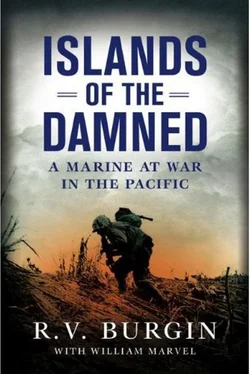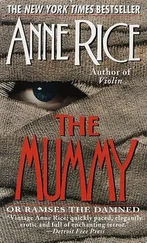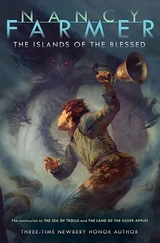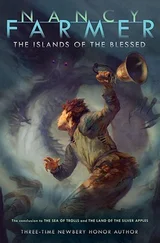Beyond our ridge lay a shallow valley, then another ridge. Whenever our men started to move forward, there was one particular Jap machine gun that would open up. Other enemy machine guns were firing that morning, but this one had us pinned down. He’d been waiting for us all night to cross the ridge and start down the other side.
Since I was head of the mortar section, it was now my job to clear a path so we could get moving again. And that machine gun was in our way.
Okinawa had these little mounds of dirt, maybe twenty or thirty feet across, scattered all over the southern part of the island, and one of them was right in front of us. It gave our riflemen some cover while they worked their way down the side, but as soon as they started off to the left, crouching down, that machine gun would start firing. Sometimes he’d let them get out a few yards into the open, then fire, like he was playing with them. We’d already had to lay down a screen of smoke grenades and send corpsmen after a couple wounded Marines.
Our three guns were about twenty-five or thirty yards behind me. I was communicating by phone. I could hear that machine chatter and I could hear the bullets zing by. I knew about where they were coming from, maybe four hundred yards across the valley and somewhere on our right. The valley was flat and open, but the opposite slope was thick with brush. I could not spot him to save my life.
I did notice one thing. The gunner would fire only after one of our men advanced past a certain point. I figured something had to be blocking his view. Since our men were headed toward the left, and away from him, when they moved out into the open they were looking in the wrong direction to see him. If I could get just past whatever was blocking his view of me, I’d get a clear view of him. I figured he’d likely fire at me just as he’d fired at everyone else that came along. But I’d see his muzzle flash. I’d know where that son of a bitch was.
The more I thought about it, the more sure I was that I could do it without getting hit, and if I could see him, I was confident we could take him out. I could land a mortar shell wherever I wanted to. That’s one thing I could always do. I developed an eye hunting around the farm, shooting squirrels and, in fur-bearing season after a freeze, possums and coons and foxes. A man came to town on Saturdays and bought the pelts for a dollar or seventy-five cents each, something like that. I don’t even know the first time I fired a gun, but I’ve hunted all my life. I still do.
But more than that, I think it came from Marine training, from hours of practice on the range and from competition between mortar squads. I could set up a mortar and get on target quicker than anybody.
I yelled at the section leader to hold his men while I tried something.
I started down and around the mound, slipping in the mud. Then, just before I got to where I judged I would be walking into the gunner’s field of view, I turned and took a step or two backward, watching the distant ridge. Instantly I saw a flash on the far hillside. Mud spattered at my feet and I felt something whack my trouser legs. But I had seen him! I jumped for cover and grabbed the phone to call in the coordinates. Then I gave the command, “Fire!”
Now that I knew exactly where he was, I could observe the effect of our fire. The first round hit a few yards off to his left. I called in a correction—a couple degrees left, a few yards farther out—and I gave the fire command again. Seconds ticked by. There was a flash and a geyser of smoke and dirt. I watched that machine gun fly forward and the gunner do a kind of backflip through the air. I was sure we’d got two of them, since every gunner had a helper. We’d put that second shell right in their laps.
I thought, Boy, that’s good shooting.
Then I looked down. There were three holes through my dungarees, two between my knee and ankle on the left, one just below my right knee.
But I was right. He hadn’t hit me.
That put an end to it. The next day we went right on across the valley.
* * *
Our easy days on Okinawa were at an end. That’s for sure.
Everybody sobered up now. Even Snafu Shelton turned serious. I would still have my differences with Scotty, even some serious differences. But our lieutenant seemed to mature as we went along. He lost his college kid silliness, and there was no more bragging about what he’d do to the Japs, no more pranks.
When I thought about it, I counted myself lucky to be serving with these men. We’d solidified into a unit. We worked well together. We had each other’s backs.
I also counted myself lucky because I hadn’t lost a man yet. Except for Redifer and Leslie Porter, who’d been nicked by that grenade at the pillbox on Ngesebus, my mortar squad hadn’t even had anyone wounded. I felt lucky about myself. I had made six landings—Cape Gloucester, Talasea, Peleliu, Ngesebus, Okinawa, and Takabanare—and so far so good. Not that it couldn’t happen to me. I saw guys around me all the time blown up, shot, cut down by shrapnel. I knew my time might come any minute.
It’s just that it hadn’t, so far.
Okinawa is a valley and a ridge, a valley and a ridge, all the way to the end of the island.
When I look at the map now, I see that we couldn’t have been more than ten miles from the southern tip. But the Japs were going to make us fight for every inch of those ten miles. They had set up a defense line about three miles long across the island from the capital at Naha through an ancient fortress called Shuri Castle to Nakagusuku Bay. Their headquarters were in a big tunnel system beneath the castle, and their soldiers had been ordered to defend Shuri with their last drop of blood. North of the Shuri line they had set up their defenses on a series of parallel ridges—Awacha, Dakeshi and finally Wana. For the rest of May and into June we would throw ourselves against these ridges one by one.
When the rain let up the morning of May 3, we faced the first of those ridges. Scotty met with the company’s commanders and then told me that the coming offensive would need the full support of our mortars. We got the section squared away and, as we fired out in front of them, K Company started across the valley. With that machine-gun nest cleared out, we made good progress. But the Japs stopped us short at the next ridgeline.
It was on this day, maybe the next, that two of my men were wounded. I was standing no more than ten feet away when the shell hit, and somehow I didn’t get a scratch. But when the smoke and dust settled, both T. L. Hudson and Jim Kornaizl were down. Hudson’s left arm was bloodied between the shoulder and elbow and he was holding it at an odd angle. Kornaizl was in the dirt, jerking from head to toe, his eyes rolled back. Our corpsman rushed over. A fragment had opened up the side of Kornaizl’s skull. We got him out of there fast, then started patching up Hudson, whose arm was hanging uselessly.
Both would survive. Hudson would become my neighbor back in Texas for a time after the war was over. But I wouldn’t see Kornaizl again for decades, and then I almost wouldn’t recognize him. When I did, he would unlock a flood of memories.
That night our company got a needed rest. All night long we could hear heavy fire on our left, where the Japs staged a big counterattack. Far to the right, we could see tracers arc out over the bay where the First Marines were firing at Japs who were attempting a surprise landing behind our lines. If they had succeeded they might have rolled up the whole line. But the First caught them when they were still in the water, killing them by the hundreds before they even got to shore. The few stragglers that made it were hunted down the next morning.
Читать дальше











